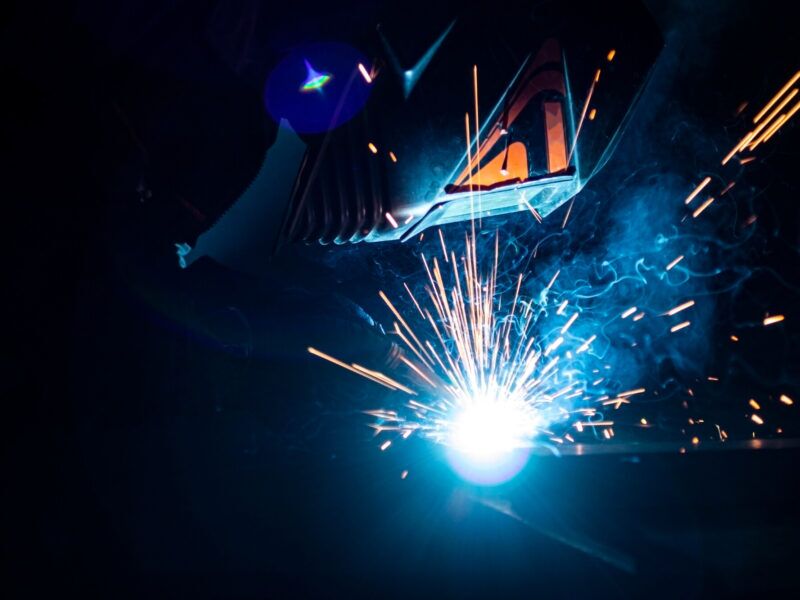Necessary Tips for Welders: Avoiding Undercut Welding and Ensuring Stronger Weld Joints
In the world of welding, achieving strong and long lasting weld joints is the foundation of generating top quality work. One common obstacle that welders usually run into is undercut welding, which can endanger the integrity of the weld joint.

Comprehending Undercut Welding
Undercut welding is an usual welding flaw that occurs when the weld metal fails to appropriately fill the groove and leads to a groove-like clinical depression along the weld bead. This issue deteriorates the weld joint, making it vulnerable to fracturing and failure under stress and anxiety. Undercutting can be triggered by various elements, consisting of excessive welding present, high welding rate, improper electrode angle, inaccurate electrode dimension, and poor welding method.
Among the primary factors for undercut welding is an imbalance between the welding present and the welding rate. If the welding current is too expensive or the welding speed is also fast, the weld metal might not adequately fill up the groove, causing damaging. Additionally, utilizing an electrode that is also huge can lead to a similar outcome, as the excess metal can not appropriately move into the groove.
To avoid undercut welding, welders must ensure they are using the appropriate welding criteria, keep a suitable electrode angle, choose the suitable electrode size, and method appropriate welding methods. By addressing these elements, welders can reduce the danger of undercutting and produce stronger, much more dependable weld joints.
Proper Welding Technique
Effective welding technique plays an important function in guaranteeing the high quality and stability of weld joints. Appropriate welding method includes a combination of adherence, skill, and precision to ideal techniques. One fundamental facet of correct welding strategy is keeping the right angle and distance between the welding gun and the workpiece. Welders have to also pay close focus to the traveling speed and heat input to avoid concerns like damaging, porosity, or incomplete fusion.
Furthermore, a consistent and constant hand activity is necessary for creating solid and resilient weld joints. Welders should intend for smooth, uniform activities to make sure even circulation of the weld product. Appropriate adjustment of the welding gun and filler product is likewise key to attaining optimal infiltration and fusion.
Moreover, controlling the warm input and selecting the proper welding parameters based on the product being welded are important factors in achieving top quality welds - Preventing weld undercut. Welders need to follow the suggested setups provided by welding treatment specifications and adjust them as required based upon the specific demands of the task. By mastering proper welding techniques, welders can significantly enhance the stamina and integrity of their weld joints
Selecting the Right Electrode
Keeping the appropriate angle and range in between the welding weapon and the workpiece is fundamental when thinking about the relevance of picking the best electrode in welding applications. The option of electrode plays a vital duty in determining the quality and strength of the weld joint. Electrodes come in different types, each created for certain functions and products.
First of all, choosing the proper electrode size is crucial. Thinner electrodes are ideal for welding slim products, while thicker electrodes are much better for thicker materials and higher heat applications. Matching the electrode diameter to the thickness of the work surface aids attain a well balanced weld.
Secondly, comprehending the material structure of the electrode is important. Different electrodes are designed for welding specific materials like steel, stainless-steel, light weight aluminum, or cast iron. Making use of the proper electrode product makes sure great combination and reduces the risk of defects in the weld.
Last but not least, thinking about the welding position and technique is crucial when picking the electrode kind. Particular electrodes are better suited for overhead or upright welding settings, while others work well for level or straight positions. Picking the ideal electrode based on the welding strategy improves the overall weld top quality and honesty.
Preparing the Base Metal
To ensure an effective welding procedure, what initial steps should be taken when preparing the base steel for welding? Additionally, any existing weld product or deposit from previous click for source welding should be eliminated to make certain a clean surface for the new weld.

Performing Post-Weld Evaluations

After carrying out these evaluations, welders should compare the results versus sector criteria and task needs to make certain that the weld joint fulfills all needed requirements. Any discrepancies or inadequacies found during the post-weld inspection needs to be immediately attended to with anonymous appropriate rehabilitative procedures to ensure the weld's stability. By diligently performing post-weld examinations and immediately dealing with any problems, welders can support the quality and integrity of their work, ultimately adding to the security and long life of the welded structures.
Final Thought

Finally, stopping undercut welding and guaranteeing more powerful weld joints need a mix of appropriate welding technique, selecting the right electrode, preparing the base steel correctly, and carrying out post-weld inspections. By recognizing the sources of undercut welding and applying the required preventative measures, welders can produce high-grade weld joints that meet sector standards and make sure the structural integrity of the bonded parts.
Undercut welding official website is a typical welding defect that happens when the weld steel fails to appropriately load the groove and results in a groove-like clinical depression along the weld grain (Preventing weld undercut). Undercutting can be created by various aspects, consisting of too much welding present, high welding speed, incorrect electrode angle, wrong electrode dimension, and inadequate welding method
One of the primary factors for undercut welding is an imbalance in between the welding existing and the welding rate. If the welding current is as well high or the welding speed is too quick, the weld steel might not adequately fill up the groove, leading to damaging.Keeping the proper angle and distance between the welding gun and the workpiece is essential when thinking about the relevance of choosing the best electrode in welding applications.